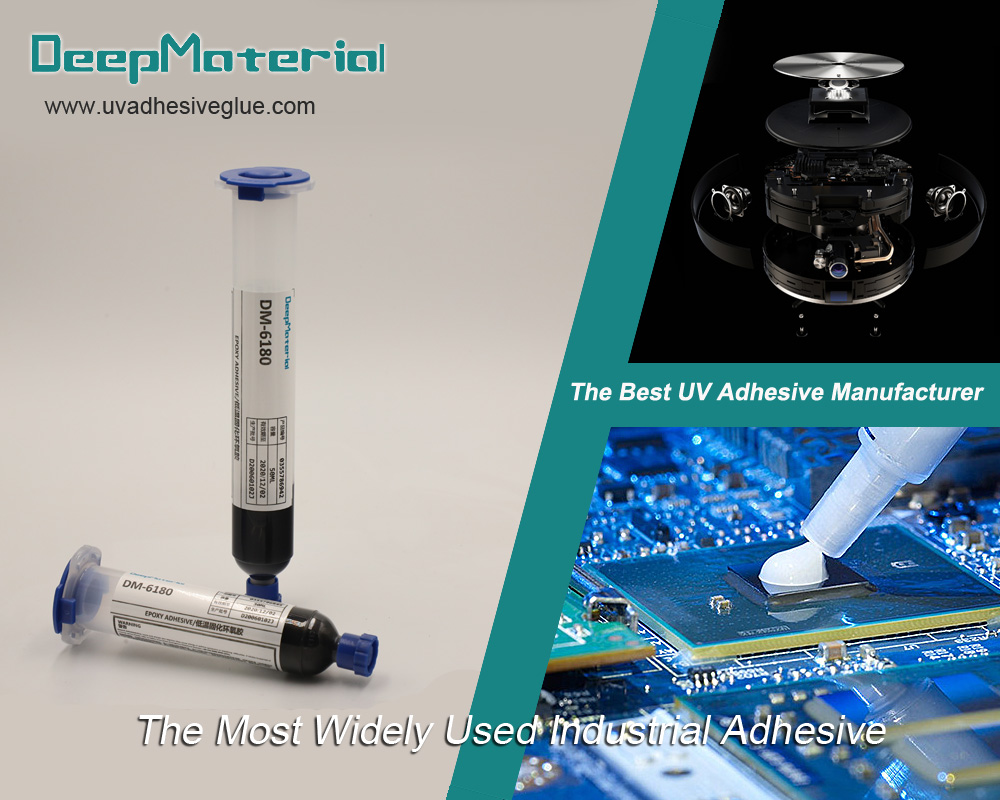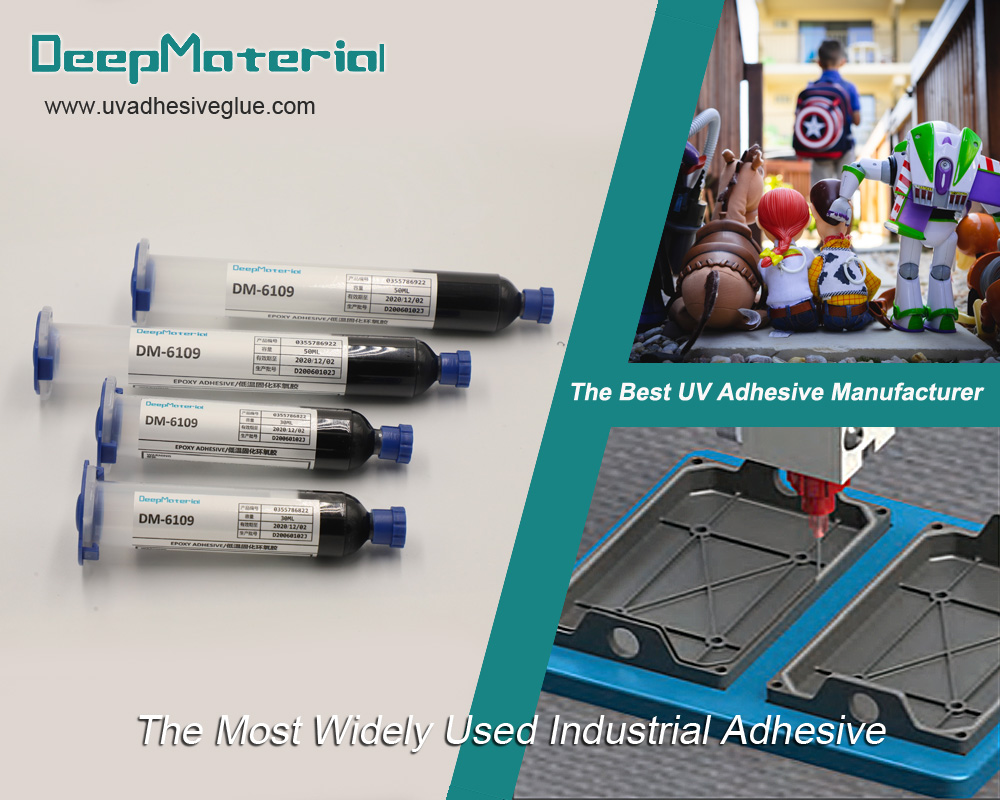The electronic industry utilizes a wide variety of adhesives that cover many different categories and applications. From positioning tiny microcircuits to bonding large motor coils, these electronic adhesives are indispensable. Without their use, life would become chaotic.
The requirements for adhesives in the electronic industry are diverse. Besides providing basic mechanical fixation, they also need to meet demands for insulation, conductivity, sealing, damping, and corrosion resistance. There are even some special requirements, with lifespans ranging from a few seconds to several years.
Electronic adhesives play crucial roles in various aspects of electronic assembly, encapsulation, and protection. These specialized adhesives are designed to provide secure and reliable bonds between electronic components, ensuring the overall performance and longevity of electronic devices, and are used in a wide range of applicationsy, such as bonding components, protecting delicate electronic parts, providing electrical insulation, and offering environmental protection.
Here are some key roles of electronic adhesives in these processes:
Electronic Assembly:
Component Bonding: Electronic adhesives are used to bond components onto printed circuit boards (PCBs) and other substrates, such as bonding surface-mount components (like resistors, capacitors, and integrated circuits) onto printed circuit boards (PCBs). They provide mechanical support, electrical conductivity (in the case of conductive adhesives), and secure attachment of various electronic components such as resistors, capacitors, integrated circuits, and surface-mount devices (SMDs).The adhesive ensures proper electrical connections and mechanical stability, preventing components from shifting or disconnecting due to mechanical stress or thermal cycling.
Die Attach: In semiconductor manufacturing, electronic adhesives serve as die attach materials. They provide a secure bond between the semiconductor chip and the substrate or lead frame, where they help attach semiconductor chips to substrates or lead frames, enabling efficient heat transfer from the chip to the package.
Surface Mount Technology (SMT): During SMT assembly, electronic adhesives are applied to temporarily hold components in place on the PCB before soldering. This ensures that components stay in the correct position during the solder reflow process, reducing the likelihood of misalignment or defects.
Printed Electronics: Electronic adhesives are utilized in the fabrication of printed electronics, which involves printing conductive inks onto flexible substrates to create electronic devices like flexible displays and RFID tags.
Bonding Dissimilar Materials: In electronic assemblies, it’s common to have different materials coming into contact with each other. For example, metal components may need to bond with plastic or glass substrates. Electronic adhesives with specific formulations are designed to provide reliable bonds between dissimilar materials, enabling the creation of complex electronic structures.
Miniaturization and Packaging Flexibility: As electronic devices become smaller and more compact, electronic adhesives play a critical role in enabling the assembly of tiny components and ensuring precise placement. Electronic adhesives allow for precise and controlled encapsulation, making it feasible to encapsulate even the tiniest components in modern miniaturized electronics. The flexibility of these adhesives enables the encapsulation of complex shapes and configurations.
Fine Pitch Bonding: Electronic adhesives with high precision allow for fine-pitch bonding, making it possible to assemble components with closely spaced leads or contacts.
Encapsulation:
Electronic adhesives play a critical role in encapsulation processes for electronic components and devices. Encapsulation involves covering sensitive electronic parts with protective materials to shield them from environmental factors and mechanical stresses.
Potting : Potting is the process of completely encasing electronic components or assemblies in a protective compound. Electronic adhesives used for potting provide environmental protection, electrical insulation, and mechanical support. This is especially important for components exposed to harsh conditions, such as moisture, chemicals, and temperature fluctuations. Potting materials are chosen based on the specific environmental requirements of the application.
Encapsulation: Many electronic components and devices are sensitive to environmental factors like moisture, dust, chemicals, and temperature fluctuations. Encapsulation involves covering these components with protective materials to shield them from such external influences. Electronic adhesives are used as encapsulants, forming a protective barrier around the components. They provide airtight and waterproof seals, safeguarding the sensitive electronics from damage and extending their lifespan.
Underfill: In flip-chip packaging, underfill adhesives fill the gap between the chip and the substrate, improving mechanical support and protecting the chip from thermal stresses caused by temperature cycling.
Wire Bonding: In microelectronics, adhesives play a role in wire bonding processes, where they are used to attach fine wires (usually gold or aluminum) to connect the semiconductor die to the package.
Protection:
Conformal Coating: Conformal coatings, made from various materials like acrylics, silicones, and urethanes, are applied as thin, protective layers directly onto PCBs and electronic assemblies. They conform to the contours of the components, covering them with a protective film that guards against moisture, dust, chemicals, and other contaminants, and contaminants, while still allowing access to critical components and maintaining electrical performance.
Sealing: Electronic adhesives with excellent sealing properties are used to close gaps and joints in electronic devices, such as the seams in enclosures or the entry points for cables. This prevents moisture, dust, and other harmful substances from entering the device, which could otherwise lead to corrosion, short circuits, or other failures.
Electrical Conductivity: Certain electronic adhesives are formulated to maintain electrical conductivity between components and the PCB. This is crucial for ensuring proper electrical connections, signal transmission, and power distribution throughout the electronic system.
Thermal Management: Thermal Management: Electronic devices generate heat during operation, and excessive heat can lead to performance issues and even permanent damage. electronic adhesives designed to enhance heat transfer between heat-generating components (like CPUs or power electronics) and heat sinks or other cooling solutions. Electronic adhesives with high thermal conductivity are used to create efficient heat transfer paths, allowing heat to dissipate from heat-generating components and spread across the substrate or heat sink.These adhesives help dissipate heat efficiently, this helps maintain the temperature within safe operating limits, ensuring optimal performance and preventing thermal failures.
Protection from Vibration and Shock: In various electronic applications, devices may be subjected to vibrations or mechanical shocks during operation or transportation. Electronic adhesives with good shock-absorbing properties can help reduce the impact of these forces on the components, minimizing the risk of damage and improving the overall reliability of the electronic system.
It’s important to note that electronic adhesives are formulated with various properties such as electrical conductivity, thermal conductivity, flexibility, and resistance to environmental factors to cater to different requirements in electronic assembly, encapsulation, and protection processes. Proper selection and application of the right adhesive are essential to ensure the reliability and longevity of electronic devices and systems.
In summary,electronic adhesives are essential in various stages of electronic manufacturing and assembly. Electronic adhesives play a crucial role in ensuring the reliability, longevity, and performance of electronic devices by facilitating proper assembly, protecting components from external influences, and managing thermal issues. Their diverse properties cater to the specific needs of the electronic industry, including consumer electronics, automotive electronics, aerospace, telecommunications, and industrial equipment, making them an essential part of modern electronic manufacturing and design processes. The choice of adhesive depends on factors like the application requirements, operating environment, material compatibility, thermal conductivity, and mechanical properties needed for optimal performance and reliability.
For more about choosing the electronic adhesive,you can pay a visit to DeepMaterial at https://www.uvadhesiveglue.com/for-electrical-appliances/ for more info.


